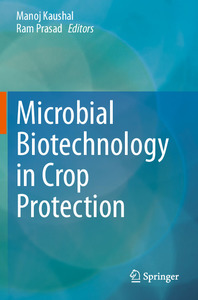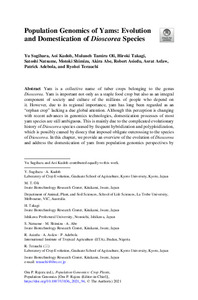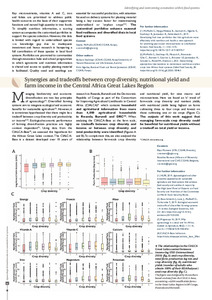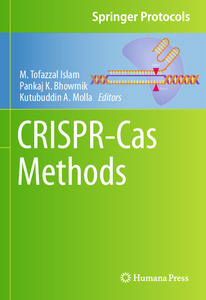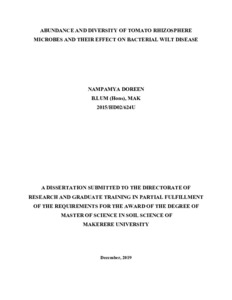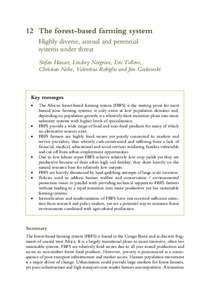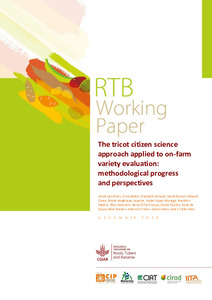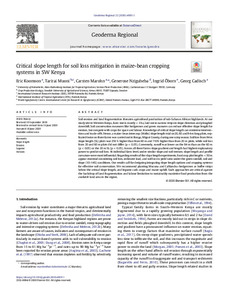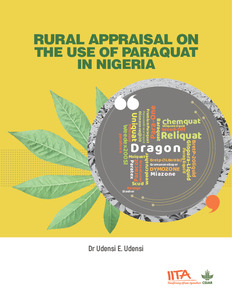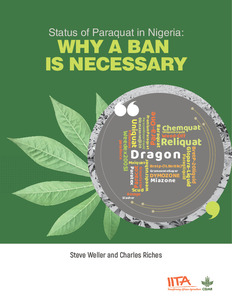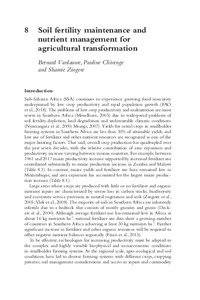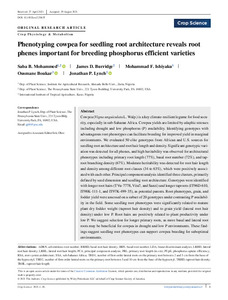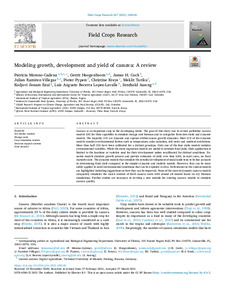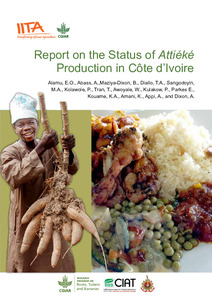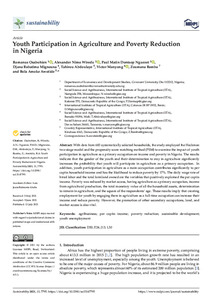Welcome to the International Institute of Tropical Agriculture Research Repository
IITA Bibliography System: Recent submissions
Now showing items 821-840 of 8099
-
Examining choice to advance gender equality in breeding research
(International Food Policy Research Institute, 2021) -
Soil fertility mapping and development of nutrient management zones in maize-based cropping system of the savanna zone of Nigeria
(Bayero University, 2019-07)There is a growing need for spatially continuous and quantitative soil information for improved farmers yields and environmental management. This study was aimed at mapping the spatial variability of soil properties with focus on delineating soil nutrient management zones (MZs) in a maize-based cropping system. Farmers’ fertilizer application rates were monitored in relation to the yield obtained. The study was conducted in Ikara, Soba, Doguwa, Bunkure, Faskari, Kankara, Malumfashi, Bakori, Kafur, ... -
Microbial biotechnology in crop protection
(Springer International Publishing, 2021) -
Next-generation plant health management supported by science-based agroecological principles
(Agropolis International, 2021) -
Population genomics of yams: evolution and domestication of Dioscorea species
(Springer, 2021)Yam is a collective name of tuber crops belonging to the genus Dioscorea. Yam is important not only as a staple food crop but also as an integral component of society and culture of the millions of people who depend on it. However, due to its regional importance, yam has long been regarded as an “orphan crop” lacking a due global attention. Although this perception is changing with recent advances in genomics technologies, domestication processes of most yam species are still ambiguous. This is ... -
Synergies and tradeoffs between crop diversity, nutritional yield and farm income in the central Africa Great Lakes Region
(Agropolis International, 2021-09) -
CRISPR-Cas9-based genome editing of banana
(Springer, 2020)Genome editing is an emerging powerful new breeding tool, which can be applied for genetic improvement of banana for important agronomic traits such as resistance to biotic stresses, adaptation to climate change, and high yielding. Banana is an important staple food and cash crop, feeding millions of people in tropical and subtropical countries. Recently, CRISPR-Cas9-based genome editing system has been established for banana in a few laboratories. Here, we describe the procedures for generation ... -
Abundance and diversity of tomato rhizosphere microbes and their effect on bacterial wilt disease
(Makerere University, 2019-12)The use of land for agricultural production is always accompanied with changes in microbial diversity and emergency of new pathogens. Microbial imbalances and unevenness have enhanced multiplication of pathogens and proliferation of many soil borne diseases, which are tedious to control. Biocontrols are promising and environmentally friendly agents against such diseases. However, microbiome composition and land use management have been mentioned as core factors in effectiveness of biocontrols. ... -
The forest-based farming system: highly diverse, annual and perennial systems under threat
(Routledge, 2019)African forest-based farming systems (FBFS) are the starting point for most humid zone farming systems; they exist only at low population densities and, depending on population growth, are a relatively short transition phase into more sedentary systems with higher levels of specialization. FBFS provide a wide range of food and non-food products for many of which no alternative sources exist. FBFS farmers are highly food secure yet poorly connected to markets and service providers, thus severely ... -
The tricot citizen science approach applied to on-farm variety evaluation: methodological progress and perspectives
(International Potato Center, 2020-12)Tricot (triadic comparisons of technologies) is a citizen science approach for testing technology options in their use environments, which is being applied to on-farm testing of crop varieties. Over the last years, important progress has been made on the tricot methodology of which an overview is given. Trial dimensions depend on several factors but tricot implies that plot size is as small as possible to include farmers with small plots (yet avoiding excessive interplot competition) while many ... -
Critical slope length for soil loss mitigation in maize-bean cropping systems in SW Kenya
(2020)Soil erosion and land fragmentation threaten agricultural production of sub-Saharan African highlands. At our study site in Western Kenya, farm size is mostly < 2 ha, laid out in narrow strips in slope direction and ploughed downhill. Soil conservation measures like hedgerows and green manures can reduce effective slope length for erosion, but compete with crops for space and labour. Knowledge of critical slope length can minimise interventions and trade–offs. Hence, a maize–bean intercrop (MzBn) ... -
Rural appraisal on the use of Paraquat in Nigeria
(International Institute of Tropical Agriculture, 2020) -
Status of Paraquat in Nigeria: why a ban is necessary
(International Institute of Tropical Agriculture, 2020) -
The root and tuber crop farming system: diversity, complexity and productivity potential
(Routledge, 2020)The root and tuber crop farming system occurs in west and central Africa, bounded on the southern, wetter side by the tree crop farming system and on the northern, drier side by the cereal-root crop mixed farming system. The root and tuber crop farming system occupies an estimated 236 million ha and has an estimated human population of 112 million, of whom over 50 per cent live in rural areas. Poverty is relatively high with about half the rural population earning less than US$1.25 per day. The ... -
Phenotyping cowpea for seedling root architecture reveals root phenes important for breeding phosphorus efficient varieties
(2021)Cowpea (Vigna unguiculata L. Walp.) is a key climate-resilient legume for food security, especially in sub-Saharan Africa. Cowpea yields are limited by edaphic stresses including drought and low phosphorus (P) availability. Identifying genotypes with advantageous root phenotypes can facilitate breeding for improved yield in marginal environments. We evaluated 50 elite genotypes from African and U.S. sources for seedling root architecture and root hair length and density. Significant genotypic ... -
Modeling growth, development and yield of cassava: a review
(2021-06-15)Cassava is an important crop in the developing world. The goal of this study was to review published cassava models (18) for their capability to simulate storage root biomass and to categorize them into static and dynamic models. The majority (14) are dynamic and capture within season growth dynamics. Most (13) of the dynamic models consider environmental factors such as temperature, solar radiation, soil water and nutrient restrictions. More than half (10) have been calibrated for a distinct ... -
Report on the status of Attieke production in Côte d’Ivoire
(International Institute of Tropical Agriculture, 2020-05) -
Virus detection in banana: a laboratory manual
(International Institute of Tropical Agriculture, 2010) -
Youth participation in agriculture and poverty reduction in Nigeria
(2021)With data from 683 systematically selected households, the study employed the Heckman two-stage model and the propensity score matching method (PSM) to examine the impact of youth participation in agriculture as a primary occupation on income and poverty in Nigeria. The results indicate that the gender of the youth and their determination to stay in agriculture significantly increases the probability that youth will participate in agriculture as a primary occupation. In addition, youth participation ...



